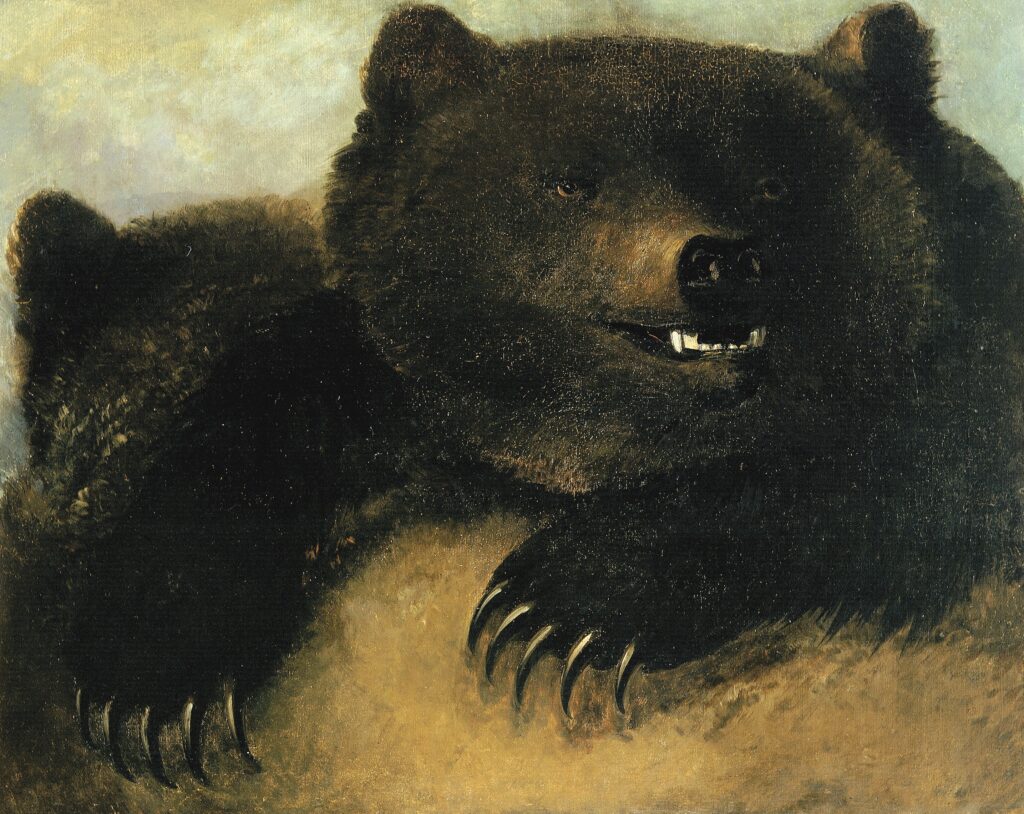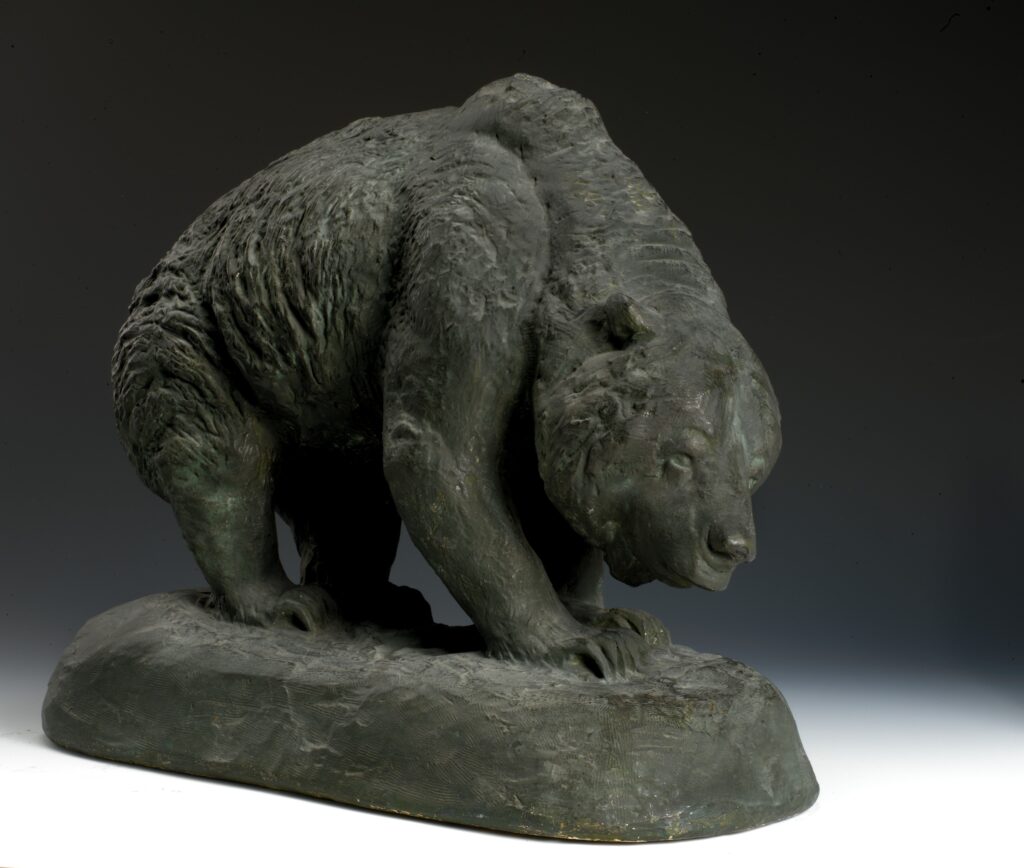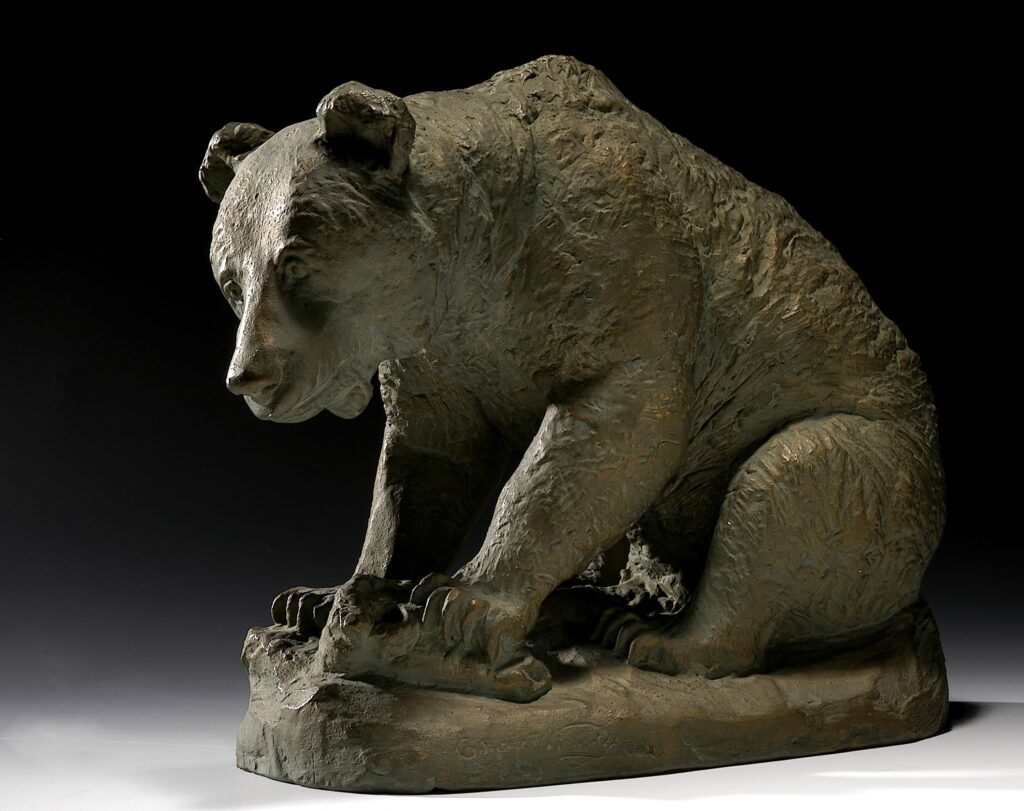Adventure with an Alpine Bear
Author Unknown
Annotations by Josh benjamin

My first adventure with a bear occurred when I was about eight years old. It was in summer, when our people lead their flocks to the upper pastures, which the melted snow leaves uncovered.
My parents had gone to a mountain chalet, leaving me in the valley under the charge of a servant. One day I made my escape, and set out to meet them. I walked on, eating the bread and cheese given me for breakfast, when, as I was passing through a wood, I saw lying asleep across my path an animal which I took for a huge brown dog.
I felt frightened; but the wish to rejoin my parents, who had been detained from home longer than they expected, prevailed, and on I went, gliding as silently as possible past the unknown beast. Despite, however, the little noise I made, the creature roused himself and came towards me.
Wishing to propitiate him, I threw down a bit of bread; he smelt it, swallowed it with apparent pleasure, and stretched out his head as if asking for more. I ventured to caress him, which he suffered me to do, although uttering a sort of protesting growl.
Throwing my breakfast behind me bit by bit, in order to occupy the attention of my strange companion, whose presence was any thing but agreeable, I reached at length the boundary of our farm. There he ceased to follow me.
I entered the chalet, where, to my great joy, I found my father, and told him my adventure. He immediately seized his gun, sallied forth, and returning at night after a fruitless chase, told me that my morning’s acquaintance was no other than a bear, from whom I had had an almost miraculous escape.
Twelve years passed on without my renewing my acquaintance with the ursine tribe. I assisted my father in managing his farm, and spent my leisure time in reading, taking particular pleasure in narratives of travel and adventure.
It happened one day that a neighbor named Raymond, a practised hunter of bears and chamois [1], asked me to accompany him on a mountain expedition. I gladly consented, and we set out, each carrying a carabine [2] on his shoulder, and a small, sharp hatchet fastened in his belt.
It was a beautiful autumn day. Towards five o’clock in the evening, having shot only a few birds, we began to think of returning. As we were passing through a thick wood, Raymond, who was grumbling at our want of success, recollected that there lay at a short distance a sort of little meadow where chamois often went to feed. At that hour there was not much chance of meeting them, but Raymond determined to make the trial. Placing me in ambush, he directed me to watch narrowly, and if he did not return at the end of half an hour, to descend the mountain. I saw him plunge into the wood, and then stoop down and creep warily along.

When I found myself alone, my first movement was to inspect the post assigned to me, in order to guard against surprise. Twilight already darkened the tops of the fir-trees, although it was scarcely six o’clock. The fatigues of the day had abated not only my strength, but my courage. I instinctively sought for a fir-tree, less denuded of the lower branches than they commonly are, to serve as an asylum in case of necessity.
I then took up my position beneath it, slung my carabine and waited patiently. The shadows of evening were fast darkening, although the setting sun still gilded the western horizon. The appointed half-hour had expired without my seeing any thing, and I began to think of returning. Just as I was about to unsling my carabine and leave my solitary position, I heard a rustling noise, too loud to be caused by the passage of a chamois.
“It is probably Raymond,” I said to myself, and was going to meet him, when it struck me that the approaching tread, crashing through the withered branches, was too slow and heavy for that of my comrade. I retreated to my tree, and another moment revealed the newcomer.
It was an enormous bear, with fiery eyes, who came on with lowered head, not having yet perceived me. Almost mechanically, I took aim and fired at him. The shot, I believe, carried off one of his ears; and with a terrific roar he bounded towards me.
Throwing away my carabine, I climbed the tree, and when the infuriated creature raised his fore paws against the trunk, I was seated on a strong branch about ten feet above him. With the courage of despair I drew my hatchet and waited to see what he would do. For a few moments he continued standing on his hind-legs against the tree, devouring me with his fierce eyes, and snorting with a loud noise; then he began to climb.
When he came near, I raised my hatchet and struck. I did so with too much precipitation, for the blow merely cut one of his fore-paws without severing it. Down he dropped, but too slightly wounded to abandon the pursuit. For some time he remained, as it were, undecided, sending forth furious howlings, which resounded through the woods.
At length, having once more begun to climb, he stopped, seemed to change his mind, and redescended. Then I saw him snuffing the earth round the fir-tree, and finally he fell to work in good earnest.
Even to this moment I shudder at the recollection of what he undertook; it was nothing else than uprooting the tree with his snout and paws, in order to bring it down. For a bear the idea was not a bad one; and I presently learned that whenever this animal fails, it is not for want of perseverance. Happily, the tree I had chosen was thick, firmly rooted, and capable of resisting the animal’s efforts for a considerable time. The only hope I had left was, that Raymond might hear the roaring of the bear, and come to my succor.

Renwick Gallery, Washington, D.C.
Alas, every minute seemed an hour! Night came on, and with its approach my courage gave way. I could no longer see my terrible enemy; his snorting respiration and the dull noise of his indefatigable labor reached my ears, mingled with the last faint evening sounds from the valley, whose inhabitants, happy and tranquil, were going to repose in peace, while I felt myself given up to a horrible and inevitable death. In my extremity I sought help where it is never asked in vain, and I passed that awful night in fervent prayer.
Morning dawned, and the bear was still mining away.
Presently the tree began to totter. I closed my eyes. But all at once he ceased to dig, and threw up his snout towards the wind. I thought I heard a distant sound amongst the fir trees; the bear heard it too, and listened, lowering his head. The noise approached, and I distinguished my own name shouted by many voices. Apparently my ferocious adversary perceived that efficient help was coming; for after having once more snuffed the breeze he plunged into the forest.
Five minutes afterward Raymond was at the foot of the tree. It was quite time; it toppled over as I descended.
“Adventure with an alpine bear.” Youth’s companion 39, no. 52 (December 1866): 206.
[1] There are two species of chamois, which are similar to antelopes and goats. They typically live on mountains or at high elevations and are hunted for their meat and soft pelts, which are used for chamois leather. Their native habitat ranges from the Pyrenees Mountains through the Alps to the Carpathians and south into Turkey.
[2] Carabine is an alternate spelling of carbine, a type of rifle. It is typically shorter, more compact, lighter, and easier to handle than longer firearms.
Contexts
The Koniag (Kodiak is a Russian spelling of the Alutiiq word) bear is entwined with the history of the Alutiiq tribe. For indigenous Alaskans, the animal was a source of meat and hide that held cultural significance and has had a shifting relationship with the people, ongoing to this day on Kodiak Island. An article by Hannah Pembroke for the Alaska Wildlife Alliance highlights the critical connection between bears and humans.
Definitions from Oxford English Dictionary
denuded: To make naked or bare; to strip of clothing or covering.
indefatigable: Incapable of being wearied; that cannot be tired out; unwearied, untiring, unremitting in labor or effort.
propitiate: To make well-disposed or favorably inclined; to win or regain the favor of; to appease, conciliate.
ursine: Of or pertaining to, characteristic of, due to, a bear or bears.
Resources for Further Study
- The Alpine bear (Ursus arctos) is also known as the brown, grizzly, or Kodiak bear, depending on the region it inhabits.
Contemporary Connections
- Recovery systems for the grizzly bear, a threatened species, are in place to increase populations in several northwestern states.
- The San Diego Zoo Wildlife Alliance has a good overview of the brown bear’s current worldwide status.
- The Alaska Department of Fish and Game has a guide for traveling where you may encounter bears.